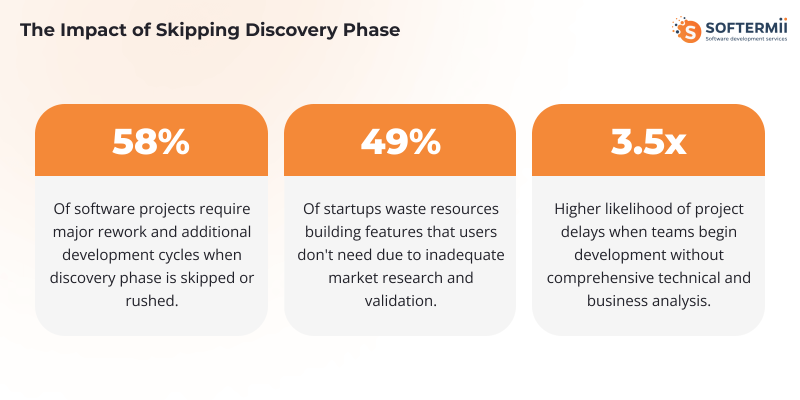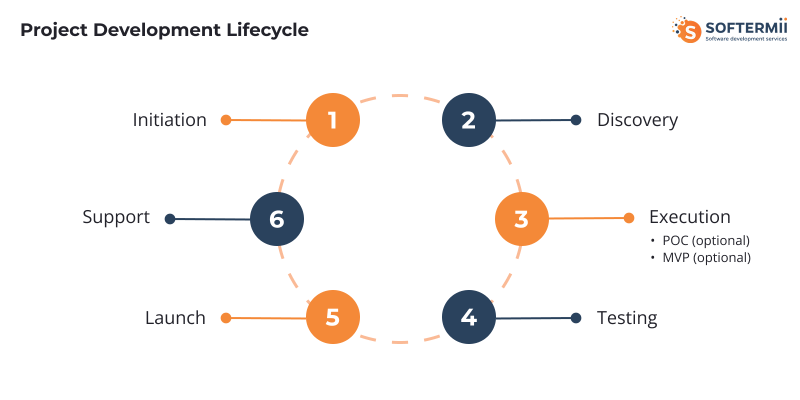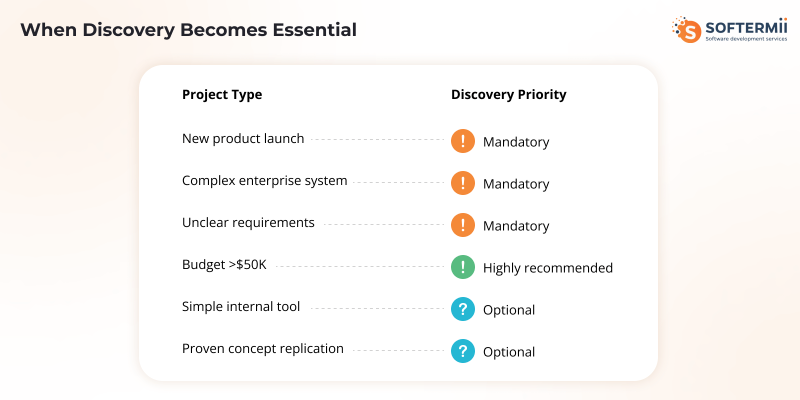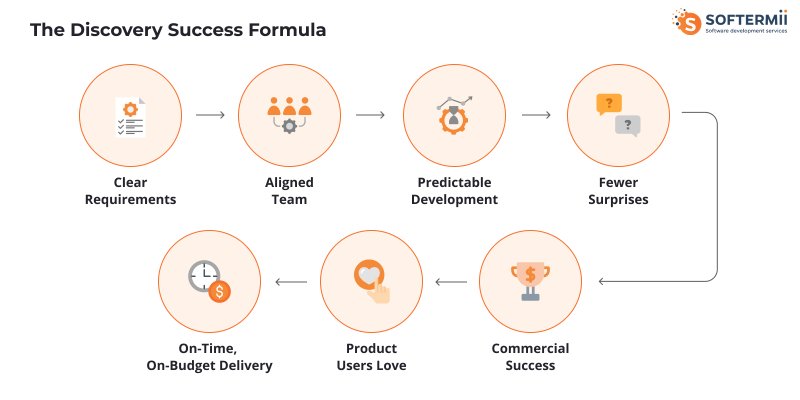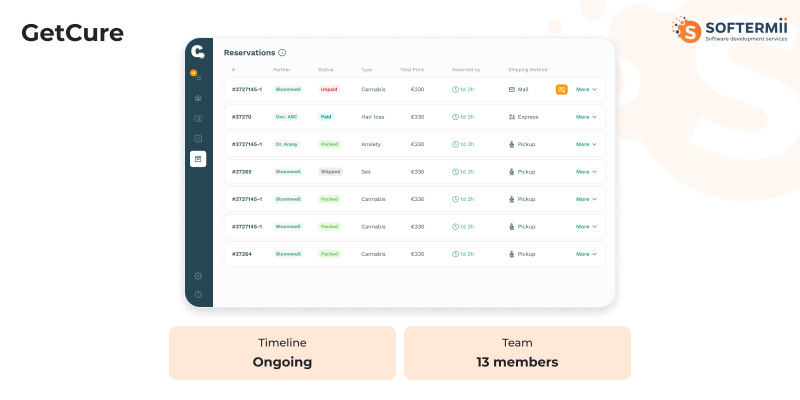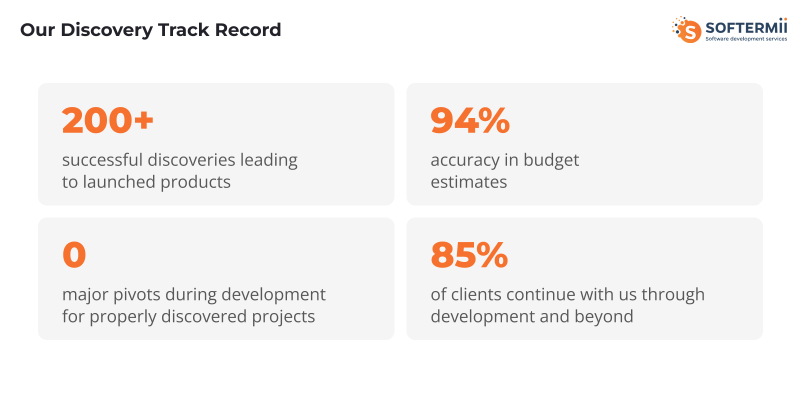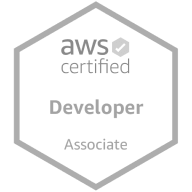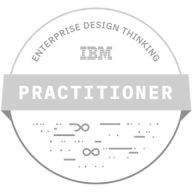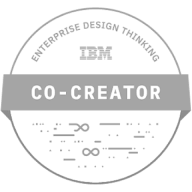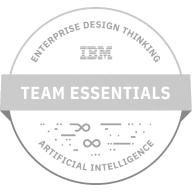
Discovery Phase in Software Development: Steps, Deliverables, Benefits
Want to know more? — Subscribe
Here's a sobering fact: 70% of software projects fail or miss their targets. Most don't fail because of bad code—they fail because teams build the wrong thing, run out of budget halfway through, or discover critical technical limitations too late.
The culprit? Skipping or rushing the discovery phase.
Think of it like building a house. You wouldn't start pouring concrete without blueprints, right? Yet countless companies jump straight into development with nothing more than a rough idea and optimism. The discovery phase is your blueprint—it aligns business goals, user needs, and technical reality before you write a single line of code.
We want to walk you through everything you need to know: what discovery is, why it matters, how to do it right, and the deliverables that set successful projects apart from expensive failures.
What is the Discovery Phase?
The discovery phase is the strategic planning stage that happens before actual software development begins. It's where you:
- Explore and validate your idea
- Define requirements clearly
- Identify risks before they become problems
- Align everyone on realistic expectations.
But let's be clear about what discovery isn't:
- It's not a single kickoff meeting where everyone nods along to a vague vision
- It's not just writing down ideas and calling it planning
- It's not skippable to "save time".
Discovery is a structured process—typically lasting two to eight weeks—that involves in-depth research, validation, and data-driven decision-making across business, technical, and user perspectives.
When Discovery Becomes Essential
Not every project requires formal discovery, but most do.
You absolutely need discovery when:
- Launching new products or web/mobile applications
- Building complex systems with multiple stakeholders
- Requirements are unclear or constantly changing
- Working with top mobile app development companies on custom mobile app development
The greater the uncertainty or investment risk, the more valuable the discovery becomes. Think of it as insurance—spending $15,000 on discovery to protect a $150,000 development investment isn't an expense, it's smart risk management.
The real question isn't "Can we afford discovery?" but rather "Can we afford to build the wrong thing?"
Why the Discovery Phase is Necessary
Every year, companies waste billions building software that nobody wants, that doesn't solve the actual problem, or that hits technical dead-ends halfway through. Discovery exists to prevent exactly these scenarios.
1. Aligning Strategy with Reality
Here's a common scenario: A founder envisions an AI-powered mobile app with 50 features, real-time collaboration, and blockchain integration. They need it in two months for $20,000.
Without discovery, you either unquestioningly agree and deliver disappointment or refuse the project entirely.
With discovery, you have honest conversations about what's achievable. The AI features alone would take six months and $80,000. The core value only needs five features, not fifty. Discovery transforms unrealistic expectations into executable plans, preventing you from wasting time and money building in the wrong direction.
2. Validating Before Building
Most founders deeply believe in their vision. They've thought about it for months or years. They're convinced they understand what users want. And sometimes they're right—but often they're wrong about critical details.
Discovery forces you to test assumptions before you build. Instead of spending $200,000 over six months creating something nobody wants, you invest $15,000 in discovery to validate with real users.
Real Example: A fintech startup planned to build traditional budgeting tools for Gen Z. Discovery user research revealed Gen Z found budgeting boring—they wanted gamification and social features instead. The $18,000 discovery investment led to a complete pivot before coding started.
Result: 50,000+ downloads in month one, versus competitors struggling with similar budgets but offering the wrong features.
3. Understanding Users, Not Assumptions
Discovery replaces "I think users want..." with "We know users need..." through systematic research:
- In-depth interviews with real potential users
- Behavioral observation of current problem-solving methods
- Prototype testing to see where users struggle or excel
- Competitive analysis learning from others' successes and failures.
This approach is essential for mobile application development companies and developers working on iOS & Android app development and apps.
4. Mitigating Risks Proactively
Every software project has risks. The question is whether you discover them during discovery when they're manageable, or mid-development when they're ten times more expensive to fix.
Common Risks Discovery Uncovers:
- Technical: Third-party API doesn't support your use case
- Budget: "Simple" feature requires complex infrastructure
- Timeline: Dependencies block parallel development
- Market: Three competitors already do this better
- Compliance: HIPAA requirements add $50K you didn't plan for.
Discovery identifies these risks early and creates mitigation strategies. According to PMI's Pulse of the Profession report, organizations that use proven risk management practices have a 2.5 times higher project success rate.
In over a decade of building software, I've seen a clear pattern: companies that invest in discovery don't just reduce risk—they change their odds of success entirely. We've had clients come to us after failed projects, and the root cause always traces back to skipped discovery. They thought they were saving time and money, but instead built the wrong product for the wrong users. Discovery isn't about documentation—it's about asking hard questions when you can still afford the answers. That $15,000 investment consistently prevents $150,000+ mistakes.
 Slava Vaniukov
Slava VaniukovKey Benefits of a Well-Executed Discovery Phase
The value of discovery shows up in measurable improvements across every dimension of software development.
Better Scope Definition & Fewer Surprises
When requirements are documented and validated during discovery, development teams know exactly what they're building. This eliminates the constant stream of mid-project questions, debates, and changes.
Studies show projects with thorough discovery have 60% fewer change requests, which translates directly to faster delivery and lower costs.
Improved Resource & Budget Estimates
After discovery, budget estimates typically achieve within 15% accuracy, compared to 200-300% overruns common in projects that skip this phase. You know what technologies you need, how many development hours each feature requires, and what realistic timelines look like.
This is crucial for custom mobile app development and enterprise mobile solutions, where budget predictability is essential.
Faster Decision-Making & Fewer Reworks
Development speed increases dramatically when teams have a clear direction. The time invested in discovery is repaid three to four times over through:
- Eliminated rework
- Faster sprint velocity
- Smoother collaboration
- Clearer priorities
Higher Chance of Delivering What Users Actually Want
By validating ideas early through prototypes and user testing, you ensure the final product resonates with your target audience. This is especially important for AI app development and mobile app development services, where user expectations are high.
Stronger Stakeholder Alignment
Everyone—executives, mobile app developers, designers, marketers—understands the vision, priorities, and constraints. This alignment prevents conflicts and ensures unified execution.
Clearer Risk Management
With identified risks and mitigation strategies documented, teams can address issues proactively rather than scrambling when problems emerge.
Faster Time to Market
Ironically, spending time on discovery actually speeds up delivery. According to research by the Standish Group, projects with proper planning phases are 40% more likely to complete on time.
The Discovery ROI Formula
| Investment | Typical Discovery Cost | What It Prevents |
|---|---|---|
| 2-3 weeks | $5,000 - $15,000 | Wrong features, scope creep |
| 4-6 weeks | $15,000 - $30,000 | Technical dead-ends, budget overruns |
| 6-8 weeks | $30,000 - $50,000 | Complete project failure, market misfit |

|
||
Most clients find discovery saves 3-5x its cost in avoided development waste, reduced rework, and prevented failed launches.
Common Challenges & 5 Mistakes in the Discovery Phase
Even when companies recognize discovery's value, execution often stumbles. Here are the critical pitfalls to avoid.
Mistake #1: The Rush to Code
The most frequent mistake is treating discovery as an obstacle rather than essential preparation. This manifests as:
- Shortening discovery "to save time"
- Skipping user research because "we already know"
- Starting development before discovery completes
The irony? Rushing discovery always wastes more time than it saves. When you start with unclear requirements, you'll pause constantly to clarify details, make conflicting assumptions, build features that get scrapped, and spend weeks in rework cycles.
The Fix: Treat discovery as non-negotiable. Even two weeks of focused discovery are better than diving in unquestioningly.
Mistake #2: Incomplete Stakeholder Participation
Some companies only involve:
- Executives (who lack user insight)
- Only developers (who miss business context)
- Forget sales, support, and operations teams entirely
This creates blind spots leading to flawed decisions.
The Fix: Include diverse perspectives—business owners, end users, developers, designers, and customer-facing teams. Use targeted interviews and workshops rather than inviting fifty people to every meeting.
Mistake #3: Analysis Paralysis
On the opposite extreme, some teams conduct endless research rounds, additional user testing, deeper competitive analysis, and multiple prototype variations. Discovery becomes a money pit, consuming budget without delivering clarity.
Root Cause: Either perfectionism (believing you need complete information) or fear of commitment (avoiding risk by staying perpetually in research mode).
The Fix: Set clear timeboxes upfront. Discovery should last 2-8 weeks with specific milestones. Make decisions based on strong confidence, not perfect certainty.
Mistake #4: Deliverables That Gather Dust
Some discovery processes generate impressive documentation that appears professional but offers little practical value—200-page reports written in technical jargon, abstract diagrams that developers can't implement, or specifications without clear priorities.
The Fix: Create materials development teams that actually reference:
- Visual wireframes showing user flows clearly
- Prioritized features with acceptance criteria
- Plain-language user stories explaining what and why
- Architecture documents guiding implementation
- Realistic estimates broken down by feature.
Mistake #5: Treating Everything as Equal Priority
Without clear prioritization, developers don't know what's critical, budgets become bloated, and products try to do everything but excel at nothing.
Use the MoSCoW Method:
- MUST HAVE → Core functionality for launch
- SHOULD HAVE → Important but not launch-critical
- COULD HAVE → Nice-to-have if budget allows
- WON'T HAVE → Explicitly out of scope
This framework is essential when working with the best mobile app development company on your app design and development.
Steps & Process: How to Do the Discovery Phase Right
Let's break discovery into logical steps that build on each other, creating a comprehensive foundation for development cross-platform apps.
Step 1: Kick-off & Stakeholder Alignment (1-3 days)
Discovery begins with getting everyone on the same page. The project manager, business owner, and key stakeholders define project vision and goals in concrete terms.
Key Questions:
- What problem are you solving?
- For whom?
- What does success look like in measurable terms?
You identify all stakeholders—not just executives, but key customers, technical experts, and anyone with veto power. You clarify who makes which decisions and how conflicts get resolved.
Key Deliverables:
- Project charter documenting vision and objectives
- Stakeholder map showing involvement levels
- Initial goals document with sign-off
Step 2: Business & User Research (1-2 weeks)
This is where assumptions get tested and insights emerge. Business analysts, UX researchers, and product managers delve into understanding markets, competition, and user needs.
| Research Area | What We Examine | Why It Matters |
|---|---|---|
| Market Analysis |
• Market size and growth trends • Customer pain points and needs • Current solutions and their costs • Willingness to pay |
Reveals whether adequate demand exists and helps position your product strategically in the market |
| Competitor Review |
• Direct and indirect competitors • What they do well and poorly • Market gaps your solution could fill |
Provides crucial context to differentiate strategically and avoid repeating known failures |

|
||
User Persona Development creates detailed profiles:
Example Persona:
Marcus, 34, Operations Manager
- Goal: Streamline team workflows without complex training
- Frustration: Current tools require IT support for basic changes
- Budget Authority: Up to $10K annually without approval
- Decision Driver: Time savings over feature lists
- Deal Breaker: Steep learning curves/
Key Deliverables:
- Market research report
- Competitive analysis matrix
- 3-5 detailed user personas
- Customer journey maps
Step 3: Requirements Gathering (1-2 weeks)
Armed with market and user insights, you translate high-level goals into specific requirements.
You document functional requirements—specific system capabilities written as clear, testable statements:
You also capture non-functional requirements describing system performance:
| Category | Example Requirement |
|---|---|
| Performance | App loads under 2 seconds on 4G |
| Security | AES-256 encryption for all data |
| Scalability | Support 100K concurrent users |
| Compliance | GDPR-compliant data handling |

|
|
Key Deliverables:
- Software Requirements Specification (SRS)
- Feature prioritization matrix
- User stories with acceptance criteria
Step 4: Technology & Architecture Feasibility (3-5 days)
Technical architects, senior developers, and DevOps engineers assess how to build what's required. This is crucial for mobile app developers planning iOS & Android app development.
Mobile App Decision Matrix:
| Approach | Pros | Cons | Best For |
|---|---|---|---|
| Native (iOS/Android) | Best performance, full device access | Higher cost, two codebases | Complex apps, high performance needs |
| Cross-Platform (React Native/Flutter) | Faster development, one codebase | Some device limitations | Most mobile apps, budget-conscious projects |
| Progressive Web App | Works everywhere, easy updates | Limited device access | Content-focused applications |

|
|||
Key Deliverables:
- Technical architecture diagram
- Technology stack recommendation with rationale
- Integration feasibility report
- Technical risk assessment with mitigations
Step 5: Prototyping & Design (1-2 weeks)
UX/UI designers and front-end developers create visual representations of the solution.
Here are a few options to reform this section:
Design evolution:
| Stage | Focus | What You Get |
|---|---|---|
| Wireframes | Structure & Layout | Basic element placement and user flow mapping |
| Mockups | Visual Design | Brand colors, typography, imagery, and styling |
| Prototype | Interactive Experience | Clickable flows demonstrating actual user interactions |

|
||
The prototype gets tested with real users. You observe where they struggle, what delights them, what confuses them, and what they wish existed.
Key Deliverables:
- Wireframes for all key screens
- High-fidelity UI mockups
- Clickable prototype (Figma, InVision, etc.)
- Design system basics
- Usability test results with recommendations
Step 6: Roadmap, Budget & Risk Assessment (3-5 days)
Project managers, technical leads, and business analysts create the execution plan. You break the project into phases—typically MVP, then subsequent versions.
Sample Roadmap:
| Phase | Duration | Key Features | Milestone |
|---|---|---|---|
| MVP (v1.0) | 3 months | User auth, core workflow, basic UI | Beta launch to select users |
| v1.1 | 1 month | Advanced filters, push notifications | Public launch |
| v2.0 | 2 months | AI recommendations, social sharing | Growth phase begins |

|
|||
You estimate development time and costs based on architecture complexity and team velocity. You create realistic timelines accounting for dependencies, testing phases, and stakeholder review cycles.
Key Deliverables:
- Detailed project roadmap with phases
- Cost estimate breakdown with contingency buffer
- Risk management plan
- Resource allocation plan
- Success metrics definition
Step 7: Documentation & Handoff (2-3 days)
The entire discovery team compiles materials, creates an executive summary for stakeholders, and prepares a developer handoff package.
Final Deliverables Package:
- Vision document (high-level strategy)
- Complete SRS (detailed requirements)
- Product backlog (prioritized user stories)
- Technical documentation (architecture, stack, integrations)
- Design files and prototypes
- Budget and timeline with stakeholder approval.
Discovery Completion Checklist
Before moving to development, ensure you have:
Deliverables & What Success Looks Like
Discovery produces tangible materials that transform abstract ideas into executable plans. Here's exactly what you should have in hand when discovery concludes.
The Discovery Deliverables Package
Think of these deliverables as your project's DNA—everything needed to bring your software to life lives in these documents.
- Project Vision & Scope Document
The North Star for your entire project. This defines the problem you're solving, the solution approach, business goals with measurable KPIs, target audience profiles, and competitive positioning. When developers or stakeholders question direction months into development, this document brings everyone back to the core mission.
- User Research Intelligence
Real insights from real people, not assumptions. This package includes 3-5 detailed personas that go beyond demographics into psychology—what motivates these users, what frustrates them, how they make decisions. Customer journey maps reveal exactly where users struggle and where your solution can be most effective. Pain point analysis prioritizes which problems matter most. Interview insights capture the voice of your market in their own words.
- Requirements Blueprint
The Software Requirements Specification (SRS) eliminates the phrase "I thought you meant..." from development. Functional requirements describe what the system does—every feature, every interaction, every rule. Non-functional requirements define how it performs—speed, security, scalability, compliance. User stories translate technical requirements into human language: "As a [user type], I want to [action] so that [benefit]." The feature prioritization matrix ranks everything by importance and feasibility, so when tough decisions arise, data drives them.
- Design Assets That Bring Ideas to Life
Wireframes for all key screens show structure without distraction—where elements go, how navigation flows, what the hierarchy looks like. High-fidelity mockups add beauty—your brand colors, typography choices, imagery style, visual personality. The interactive prototype makes it real—stakeholders can click through the experience, test workflows, and provide feedback before a single line of code exists. Design system guidelines ensure consistency as development progresses. Usability test results validate that real users can actually accomplish their goals.
- Technical Architecture Blueprint
The system architecture diagram shows how all pieces connect—frontend, backend, databases, third-party services, data flows. Technology stack recommendations explain not just what to use, but why—the trade-offs considered, alternatives evaluated, and rationale for each choice. API and integration specifications detail how your system communicates with the outside world. The database schema outlines how information is organized and accessed. Scalability and security plans ensure the system can grow and stay protected.
- Execution Roadmap
Development broken into digestible phases—typically starting with MVP, then v1.1, then v2.0. Each phase has clear features, realistic timelines, and defined success milestones. Sprint planning outlines help developers hit the ground running. Feature release timelines inform stakeholders when capabilities are available. Dependencies are mapped, ensuring that nothing blocks progress unexpectedly.
- Financial Reality Check
The budget estimate provides transparency into costs—broken down by phase, by feature category, by resource type. It includes development hours with realistic effort estimates, resource allocation showing who does what, timeline mapped to costs. Hence, you can see the relationship, and a contingency buffer (typically 15-20%) is included because unexpected challenges are always likely to emerge. This isn't a rough guess—it's a financial commitment with ±15% accuracy.
- Risk Management Plan
The risk register identifies every threat to success—technical risks, budget risks, timeline risks, market risks, compliance risks. Each risk gets rated by probability and potential impact. Mitigation strategies explain how to reduce likelihood or minimize damage. Contingency plans provide backup approaches if risks materialize. Early warning indicators help you spot problems before they escalate.
The Discovery Success Scorecard
How do you know if discovery actually worked? Here are the metrics that separate great discovery from wasted time:
| Success Metric | What Excellence Looks Like | Warning Signs |
|---|---|---|
| Stakeholder Confidence | All key players enthusiastically approve the plan and understand their role | Hesitation, unanswered questions, conflicting expectations |
| Estimate Accuracy | Final project cost lands within 15% of discovery estimate | Cost overruns exceeding 30%, constant budget revision requests |
| Scope Stability | Fewer than 10% of features change during development | Constant "new requirements," frequent scope debates |
| Team Velocity | Developers start immediately without confusion or clarification requests | Frequent pauses to ask questions, conflicting interpretations |
| User Validation | Prototype testing shows 80%+ positive user response and task completion | Users confused by interface, unable to complete basic tasks |
| Risk Prevention | No major "surprise" blockers emerge during development | Unexpected technical limitations, integration failures |
| Development Flow | Smooth sprint execution with predictable velocity and minimal rework | Constant pivots, throwing away completed work, missed deadlines |
| Post-Launch Performance | Strong user adoption, positive reviews, clear ROI trajectory | Low downloads, poor retention, fundamental product-market misfit |

|
||
The Discovery Success Formula
Great discovery creates a virtuous cycle that compounds throughout the project:
When discovery works, it doesn't just produce documents—it transforms uncertainty into confidence, assumptions into validated facts, and risky bets into calculated investments.
The ultimate measure of discovery success? Six months after launch, when your product is growing, users are engaged, and stakeholders are discussing the next version instead of explaining why the first version failed. That's when you realize the discovery investment wasn't a cost—it was the smartest money you spent on the entire project.
What Happens After the Discovery Phase?
Discovery doesn't end with a handoff—it transforms how your entire project unfolds.
The Transition to Development
Week 1: Discovery documents are handed to the development team. They review architecture, set up development environments, and hold their first sprint planning session. Because requirements are clear and prioritized, sprint planning takes hours instead of days.
Months 1-X: Development proceeds in prioritized phases, building the MVP first. Regular demos with stakeholders happen smoothly because everyone already agreed on what success looks like.
How Discovery Changes Everything
| Without Discovery | With Discovery |
|---|---|
| "What should we build next?" constant debates | Follow the roadmap you created |
| Developers interrupt work with questions | Clear requirements answer 90% upfront |
| Scope creep becomes normal | Baseline documented; changes tracked properly |
| Monthly budget surprises | Predictable costs per estimate |
| Arguments about priorities | Data-driven prioritization already done |
| "Should have thought of this earlier" | Risks identified and mitigated proactively |

|
|
The Compound Effect
Good discovery makes everything after development more successful too:
- Marketing teams have user personas and messaging ready
- Sales can demo prototypes to early customers
- Support understands user journeys before launch
- Leadership makes strategic decisions confidently
- Investors see professional planning and execution
Discovery is the gift that keeps giving—the foundation that makes every subsequent phase smoother, faster, and more successful.
Why Softermii Is the Right Partner for Discovery
At Softermii, we don't just "do discovery"—we've perfected it through hundreds of successful software projects for startups and enterprises alike.
What Makes Our Discovery Different
Battle-Tested Process: Our methodology is refined from 10+ years of building custom mobile app development solutions. We've learned what works through real-world experience across industries.
Deep Mobile Expertise: As one of the top mobile app development companies, we have in-depth knowledge of iOS & Android app development. We've built native apps, cross-platform apps, and progressive web apps. This expertise enables us to identify mobile-specific issues during discovery, rather than after you've invested in development.
Transparent & Data-Driven: You'll see exactly where your investment goes with our project cost calculator. We give honest assessments—if something won't work, we tell you. No surprises, just partnership.
Full-Spectrum Capabilities: Discovery at Softermii seamlessly integrates with our comprehensive mobile app development services. One team takes you from discovery through launch—no handoff friction or lost context.
Cutting-Edge Technology: Our specialists in AI app development can evaluate cutting-edge possibilities. Our enterprise mobile solutions experience handles complex business requirements.
User-Centered Approach: We employ a design thinking methodology throughout the discovery phase. Our designers create interactive prototypes and conduct real user testing. This ensures we're not just technically proficient—we're building solutions people love to use.
Flexible Engagement Models
For Startups: We offer streamlined discovery that maximizes value per dollar, understanding that budget matters. Learn more about our startup services.
Product Management Expertise: Our team guides strategy from concept through launch through our product management services. We don't just document requirements—we help shape your product vision.
Dedicated Team Options: For ongoing partnerships, we can build a dedicated development team that knows your product inside and out.
Project Management Excellence: We keep discovery on time and on budget through proven project management methodologies. You'll always know where things stand.
Discovery Phase in Action: GetCure Case Study
When GetCure approached us with a vision to connect pharmacies with delivery platforms, the path forward wasn't immediately clear. Multiple markets, complex integrations with Uber Eats and Wolt, and evolving AI requirements demanded meticulous planning before a single line of code was written.
The Discovery Challenge:
GetCure needed a platform that would work across different pharmacy ecosystems in Germany, France, and Austria—each with unique workflows, regulations, and delivery partner requirements. The initial concept was broad, but the execution path needed precision.
Our Discovery Approach:
- Business Analytics & Initial Communication
Our team conducted deep analysis of the pharmacy ecosystem and delivery partner workflows to identify key touchpoints and data flows. We mapped user flows for both pharmacists and patients, understanding how orders would move through the system in real-world scenarios. This phase helped define the minimum viable product and prioritize which AI features would deliver immediate value versus those that could be phased in later.
- Multi-Market Research
We studied pharmacy workflows across Germany, France, and Austria to understand regional differences in:
- Prescription handling and over-the-counter medication regulations
- PZN (Pharmazentralnummer) code systems and product identification
- Emergency hours and holiday schedule variations
- Customer identification requirements
- Technical Architecture Planning
Rather than jumping into development, we designed a flexible architecture that could:
- Scale across multiple countries without complete rebuilds
- Integrate seamlessly with third-party delivery services
- Support future AI features that weren't yet fully defined
- Handle real-time order management across multiple channels
- Roadmap Definition with Clear Responsibilities
We created an aligned development roadmap that prioritized core functionality first (pharmacy order management, delivery integrations) while building infrastructure that could later support advanced features like AI voice ordering.
The Results of Thorough Discovery:
- Phased Success: Initial launch targeted German pharmacies in October 2022, then successfully scaled to France and Austria—exactly as planned during discovery.
- AI Integration Ready: When GetCure decided to add AI voice ordering capabilities in December 2024, our discovery-phase architecture decisions meant we could integrate this complex feature and reach pilot launch in just 3.5 months—not the 6-9 months a poorly planned system would have required.
- No Scope Creep: Despite tight delivery schedules and evolving requirements, our discovery foundation kept the project stable. We adapted workflows without derailing timelines because we'd anticipated flexibility needs during planning.
- Multi-Region Rollout Without Rebuilding: The backend architecture we designed during discovery supported geographic scaling from day one. Adding new countries didn't mean starting over—it meant configuration, not reconstruction.
Key Discovery Deliverables for GetCure:
- User Flow Diagrams: Visual maps of pharmacist and patient journeys through the platform
- Technical Architecture Documentation: Scalable system design supporting multi-country deployment
- Integration Specifications: Detailed requirements for Uber Eats, Wolt, and future delivery partners
- AI Feature Roadmap: Phased approach to voice ordering and PZN recognition
- Market-Specific Compliance Requirements: Regulatory considerations for Germany, France, and Austria
- Development Timeline with Milestones: Clear phases from MVP to full-scale launch
What GetCure Avoided Through Discovery:
- ✗ Building separate apps for each country (saved 6+ months of redundant development)
- ✗ Rearchitecting the system when AI features were added (saved $50K+ in refactoring costs)
- ✗ Integration failures with delivery partners (prevented potential revenue loss and reputation damage)
- ✗ Compliance issues in new markets (avoided regulatory penalties and launch delays)
Industries Where We Excel
We've delivered successful discovery and development across:
- Healthcare & Telemedicine
- Fintech & Banking
- E-commerce & Retail
- Education & E-learning
- Enterprise & B2B Solutions
- On-demand Service Platforms
Our mobile app developers understand industry-specific requirements, regulations, and user expectations.
Ready to Start Your Discovery Journey?
Don't let your project become part of the 45% that overrun budgets or the 62% that fail due to misaligned expectations. GetCure's success story started with thorough discovery—and yours can too.
Schedule your free discovery consultation today and let's map out your path to software success.
Conclusion
The discovery phase isn't glamorous. You won't see a working app at the end of it. There's no fancy launch party. But here's what you will have:
- Confidence that you're building the right thing for the right users
- Clarity that everyone—stakeholders, developers, designers—understands the plan
- Predictability in timeline, budget, and resource needs
- Protection from expensive mistakes that derail projects
- Proof that your idea resonates with real users and has market fit.
Most importantly, you'll have a foundation that transforms your software project from a risky bet into a calculated investment with measurable odds of success.
The statistics are stark: 70% of software projects fail. The majority of these failures trace back to inadequate planning, misunderstood requirements, technical missteps, or building solutions that don't match market needs. These are exactly the problems discovery solves.
The question isn't whether you can afford to do discovery—it's whether you can afford not to.
The $15,000 you invest in discovery protects the $150,000 you're about to invest in development. It's the difference between launching a product users love and launching one that quietly fails. It's the difference between hitting your timeline and budget versus explaining to stakeholders why you need another six months and double the funding.
Ready to start your discovery phase the right way? Our team of experienced mobile app developers, business analysts, and designers can help you validate your idea, define clear requirements, and create a comprehensive roadmap for success.
Frequently Asked Questions
What is the discovery phase in software development?
The discovery phase is the initial stage of software development where teams research, plan, and validate project requirements before coding begins. It includes stakeholder interviews, user research, technical feasibility assessment, prototyping, and creating detailed roadmaps.
This phase aligns business goals with user needs and technical realities, producing deliverables such as requirements documents, wireframes, budget estimates, and risk assessments that guide successful development. Think of it as creating the blueprint before building the house—it ensures everyone knows what they're building, why, and how.
How long does a discovery phase usually take?
Discovery typically takes 2-8 weeks, depending on project complexity. Simple projects with straightforward features need only 2-3 weeks. Medium complexity projects with custom platforms and multiple integrations typically require 4-6 weeks. Complex projects involving enterprise systems, AI/ML features, or heavy compliance requirements may need 6-8 weeks.
Rushing below 2 weeks usually backfires—you miss critical insights. Going beyond 8 weeks often indicates analysis paralysis. The goal is to gather enough information to make confident decisions, not to achieve perfect knowledge.
What are the key deliverables of a software project discovery phase?
Essential discovery deliverables include: requirements documentation (SRS with functional and non-functional requirements), user research (personas, journey maps, pain points), design assets (wireframes, mockups, interactive prototype), technical architecture (system diagram, technology stack, integrations), project roadmap (phased timeline with milestones), budget estimate (detailed cost breakdown by phase), risk assessment (identified risks with mitigation strategies), and product backlog (prioritized features as user stories).
These materials guide development, align stakeholders, and provide accountability. The best deliverables aren't just comprehensive—they're practical tools that teams actually reference throughout the project.
Is discovery phase necessary for every software project?
Not every project needs formal discovery, but most do.
Skip discovery only for: extremely simple projects
with crystal-clear requirements, internal tools with one stakeholder
and minimal features, or proven concepts you're replicating exactly.
Always do discovery for:
new product launches, complex systems with multiple stakeholders,
projects where requirements are unclear, significant budget
investments (>$50K), regulated industries like healthcare or
finance, situations where technical feasibility is uncertain, and
when scaling or pivoting existing products. The more uncertainty or
investment risk, the more valuable discovery becomes. Even an
abbreviated 1-week discovery beats no planning at all.
How much does a discovery phase cost?
Discovery phase costs typically range from $5,000 to $50,000 depending on scope. Basic discovery for simple projects (2-3 weeks) costs $5,000-$15,000. Standard discovery for medium complexity projects (4-6 weeks) runs $15,000-$30,000. Comprehensive discovery for complex enterprise solutions (6-8 weeks) can be $30,000-$50,000+. This represents roughly 10-15% of total project budget.
For example, a $150,000 mobile app development project might have a $15,000-20,000 discovery phase. This upfront investment typically saves 3-5x its cost in avoided development waste, reduced expensive mid-project changes, and prevented failed launches.
What happens if you skip the discovery phase?
Skipping discovery creates a cascade of problems that multiply over time.
Immediately, you start building features users don't want, choosing wrong technology that hits limitations, making wildly inaccurate budget and timeline estimates, and creating misaligned stakeholder expectations.
Mid-project, you face budget overruns (often 2-3x original estimates), timeline delays adding months of unexpected work, constant scope changes and expensive rework, team frustration and stakeholder conflicts, and technical debt from rushed architecture decisions.
Post-launch, you see poor user adoption, expensive pivots or rebuilds, product-market fit mismatches, and features nobody uses. According to research from the Project Management Institute, projects with proper discovery have 60% fewer changes during development and 40% higher success rates. A $20,000 discovery investment typically prevents $100,000+ in wasted development and failed launches.
How about to rate this article?
0 ratings • Avg 0 / 5
Written by:

